
Chain Bridge Budapest (Széchenyi Lánchíd), the oldest and grandest bridge in Budapest
The Széchenyi Chain Bridge Budapest, or as the locals call it, Lánchíd, is without doubt one of the most iconic sights along the Danube in the capital of Hungary.
O
C
ArtiInaugurated in 1894, it was the first permanent stone bridge connecting Buda and Pest. Lit by night, the chains of the suspension bridge look just like majestic pearls on the neck of the river, no wonder the bridge is loved by locals and tourist alike. After its tragic destruction during World War II, the bridge got rebuilt in a slightly wider form and opened exactly on the 100th anniversary of its original construction. And its fame is intact ever since, which makes marveling at the Chain Bridge one of the top 100 things to do in Budapest. Read on to see the Chain Bridge in the limelight.
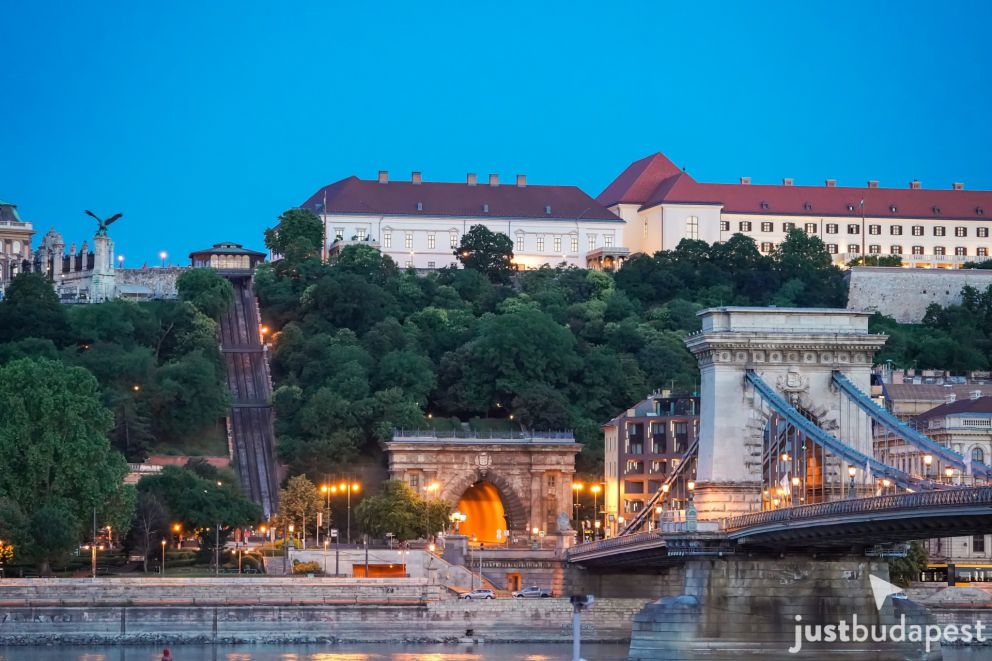
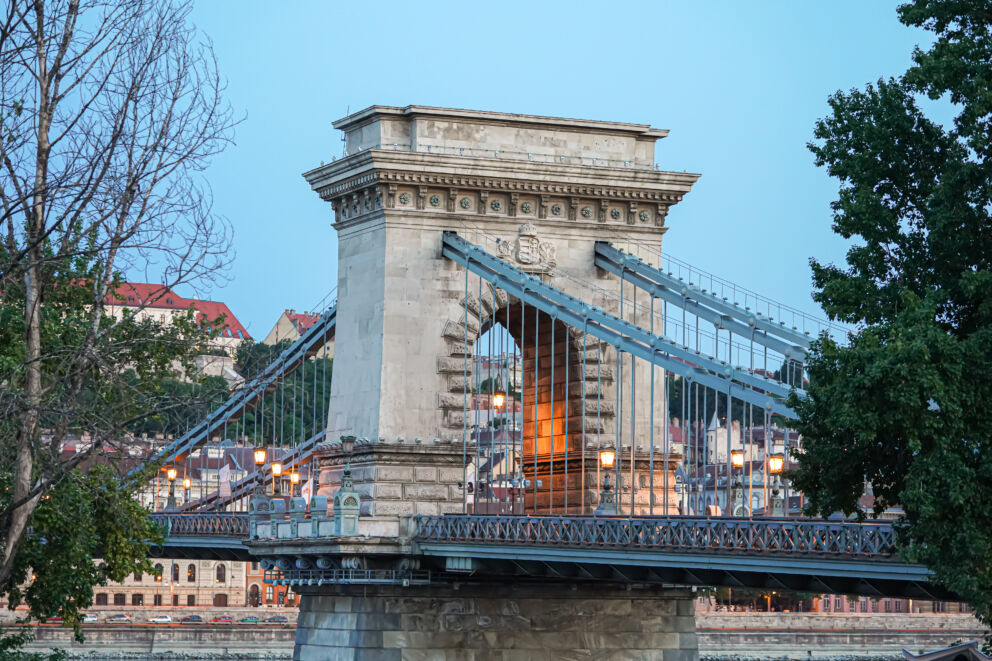
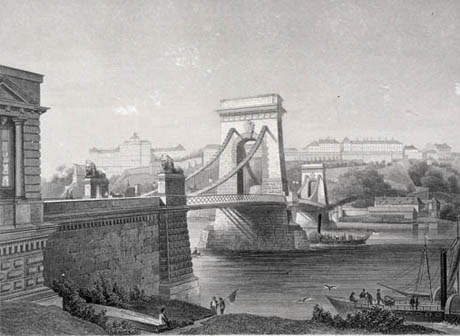
Calling for a permanent bridge over the Danube
Before the construction of the iconic bridge, nothing connected the then separate towns, Pest and Buda. At that time, locals could only cross the river Danube by boats, which was tiring and dangerous, especially during the coldest winter months. Alternatively, when the river froze, people tried to cross it on foot – a no less risky endeavor. The need for a safe gateway over the Danube became more eminent, bringing the idea of a permanent bridge to life.
Upon the proposal of Count István Széchenyi, the Chain Bridge was designed by English engineer William Tierney Clark and built by Scottish engineer Adam Clark. Based on William Clark’s suspension bridge over the Thames at Hammersmith, the Hungarian equivalent came to life in the form of a 3-part chain bridge with only two pillars so that ice could freely flow on the river during winter.
The Chain Bridge connects two of the most vibrant and central squares of the city, both of which are must-see sights if you’re visiting Budapest. On the Pest side, it leads to the glorious Széchenyi tér with the charming Gresham Palace and the Hungarian Academy of Sciences. Similarly eye-catching on the Buda side, the bridge stretches to the picturesque Clark Adam tér that runs into the Buda Castle Tunnel and is also near to the Zero Kilometer Stone, and the Castle Hill Funicular that leads to the Buda Castle.
Check out the hop-on hop-off bus tours, they stop both at Széchenyi tér and Clark Adam tér, offering an all-inclusive sightseeing experience.
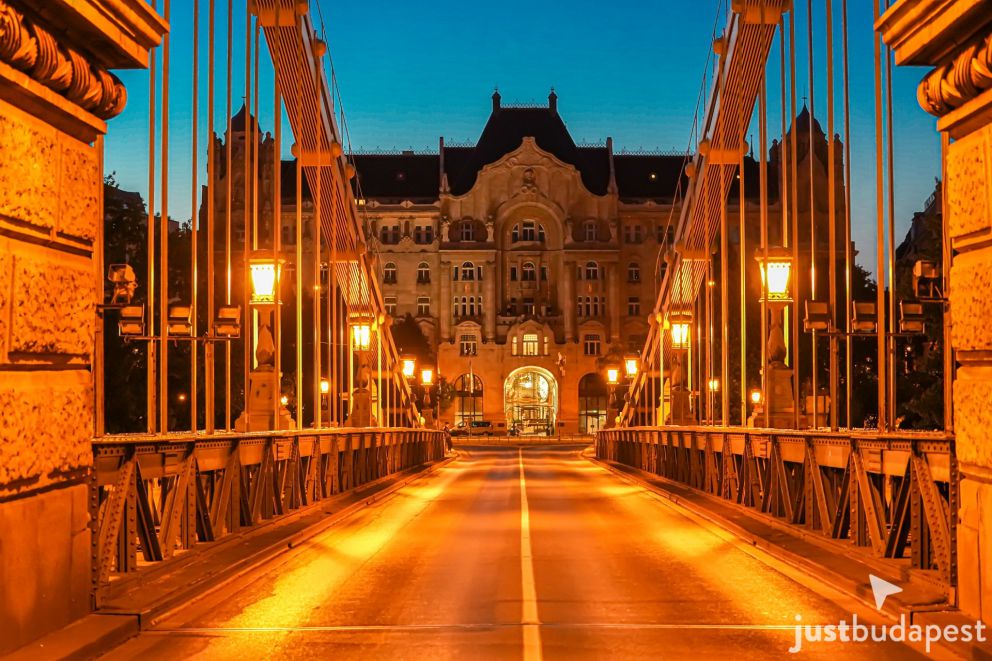
The Chain Bridge in Budapest is named after the Greatest Hungarian
If you are generally interested in the enchanting beauty of Europe’s bridges, sooner or later you will come to the point of asking yourself where is Hungary, and where one of the most beautiful bridges in Hungary, the Chain Bridge, is.
Over the centuries, the history of the Chain Bridge got inextricably intertwined with the history of Budapest. Starting with its initiator, Count István Széchenyi, a prominent figure of the 18th century Hungary. He pitched the idea of a permanent stone bridge over the Danube to his fellow aristocrats. For his great contribution to the urban development of Budapest, he earned the distinctive title, “the Greatest Hungarian”. Exploring the city, you can spot place names from squares to streets with his name, such as the most popular thermal spa of Budapest, the Széchenyi Bath. Yet, the bridge was named after him only in 1899, 50 years after its opening.
Pro tip: if you are interested in baths, we recommend the Rudas Bath, the place is simply stunning.
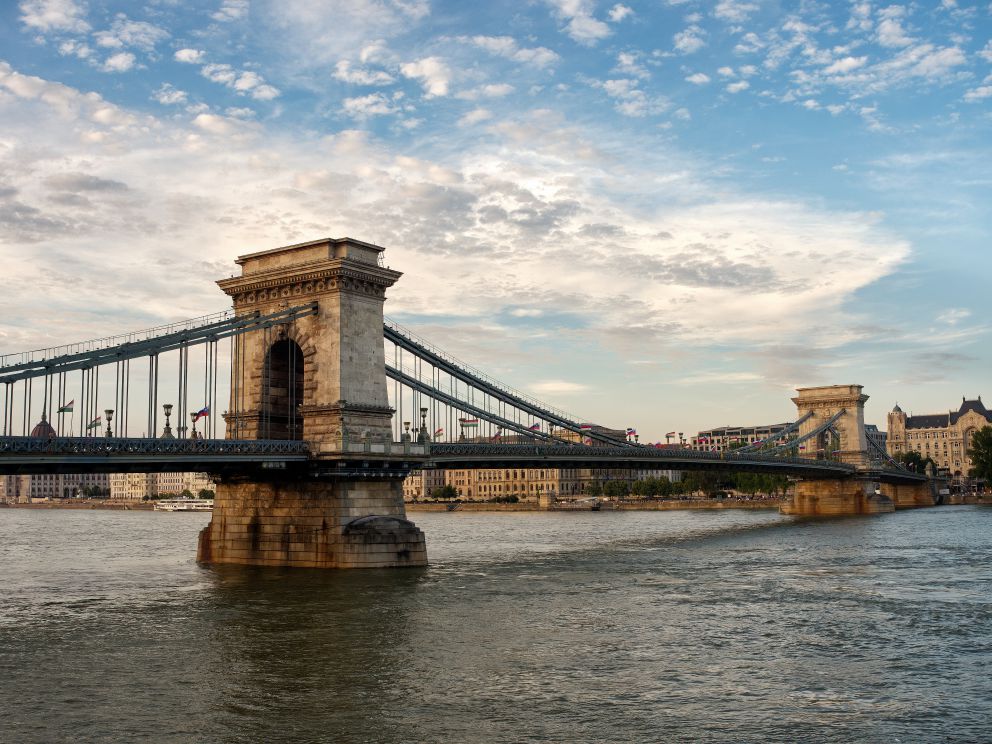
The Chain Bridge took 20 years to build after Széchenyi’s idea got accepted. It was opened in 1849. Sadly, its inauguration was everything but glorious, as it took place in a mournful time of the Hungarian history, right after the suppression of the revolution for independence in 1849. Széchenyi himself never got to walk across his bridge either. The trials of the bridge did not end with its somber inauguration. Even the bridge was blown once: during WWII, the retreating German troops blew up all the bridges of Budapest in 1945. Luckily, the reconstruction went fast and the newly-built, slightly wider Chain Bridge reopened in 1949, on the 100th anniversary of its first opening. The gates and the pillars even got decorative lighting, giving the iron chain structure a pearl-like glow by night.
Now in a reconstruction phase
If you want to walk or drive through the Chain Bridge during your stay in Budapest, make sure to get informed on the current state of the bridge reconstruction works, planned to be started in the summer of 2021.
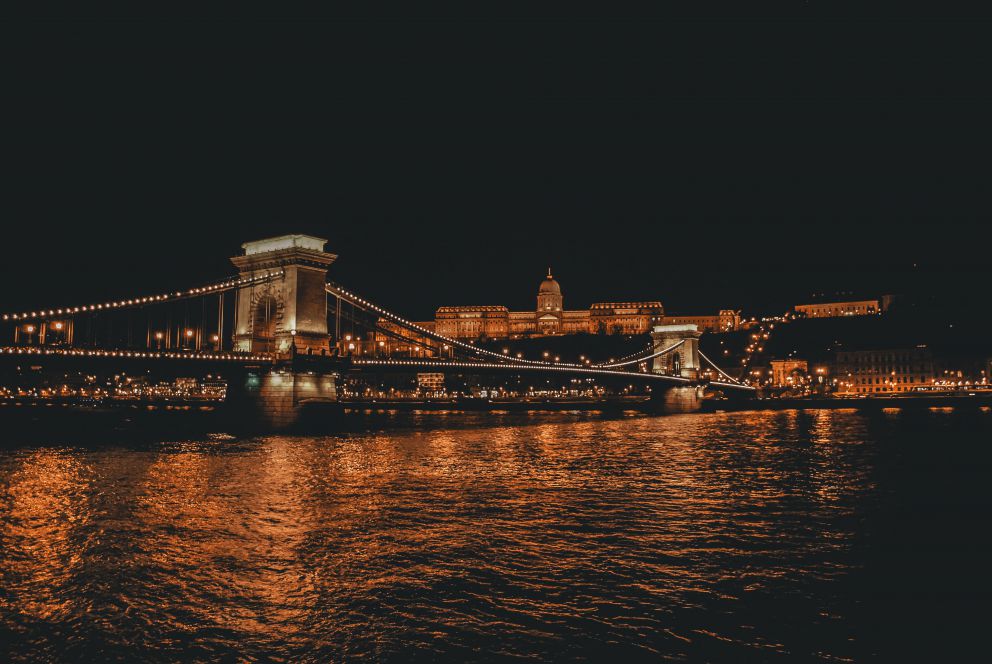
Urban legends about the Széchenyi Chain Bridge Hungary
Rumor has it the bridge-guarding lions lack their tongues. The stone lions are the works of sculptor János Marschalkó and were added to the bridge in 1852. As the story goes, he got teased so much because of the flaws of his statues that he jumped into the Danube River and died. But fear not, the reality is not that tragic. The truth is that the lions do have tongues, but they are only visible from above, which the sculptor successfully proved to his teasers and lived a long life.
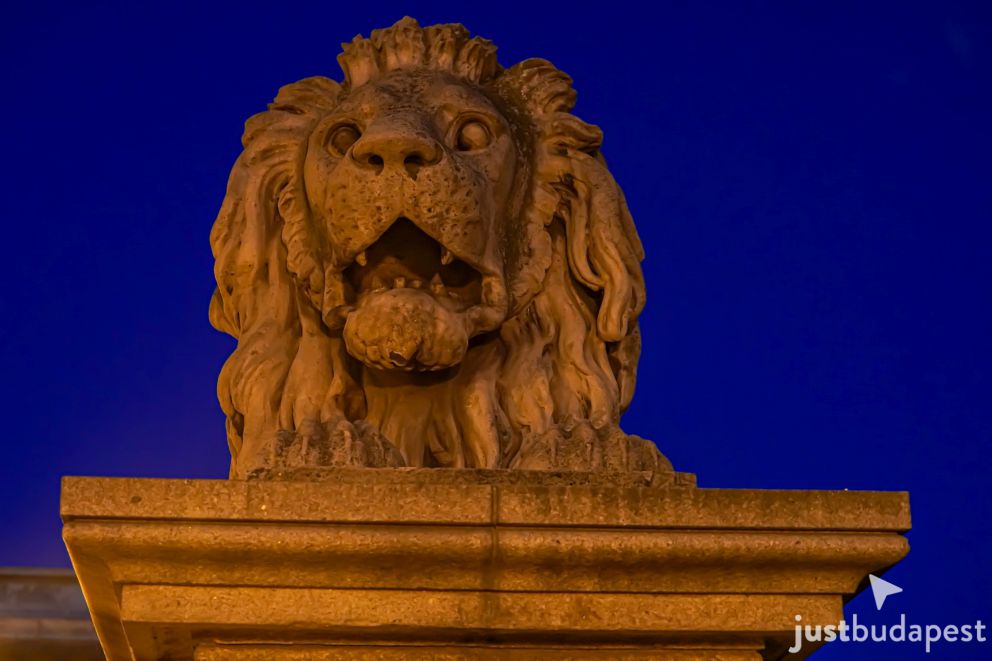
Another popular story about the Chain Bridge is that the Buda Castle Tunnel was built so that the bridge and the lions can be pulled in when it rains. Surreal as it may sound, the physical properties of the 350-meter-long tunnel would even allow this. In reality, however, its purpose was to connect the residential Buda districts with the new bridge, and it also hosted the flat of the bridgemaster.
Do not miss the Pontoon!
If you’re looking for a scenic spot to marvel at the Chain Bridge, head to Pontoon, the vibrant open-air bar by the Pest-side pillar. It offers colorful parties with a panoramic view all summer long.
If you’re looking for a true Irish atmosphere, Budapest has a number of Irish pubs to choose from.
Lanchid Budapest bridge – the fairest bridge of them all in the city?
Iconic and stunning, the Széchenyi Chain Bridge is definitely the most famous of the bridges in Budapest, the capital of Hungary, today. With its occasional debuts in blockbuster movies and video clips (check out Katy Perry or Will Smith), the Chain Bridge is known near and far, with only two other Budapest bridges that could possibly rival its fame.
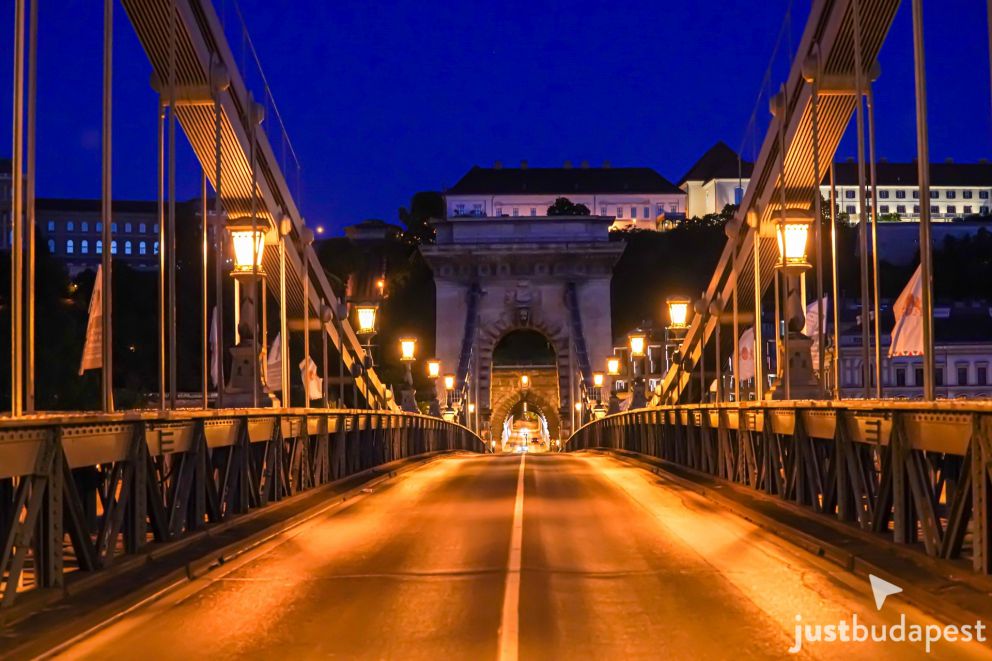
One of them is the so-called “green bridge”, aka the Liberty Bridge by the Gellért Hill, which enjoys an ever-growing reputation in the past few years. It all started in 2016 when the bridge was closed off from traffic due to tramline construction works for a whole month during the summer. Thanks to its easy reach and picturesque view, the bridge was quickly inhabited by pedestrians. The impromptu gatherings then led to yearly summertime gigs (called Szabihíd) with picnics, performances, music sessions, yoga classes, and more. Today, if asked, many locals may say they like the Liberty Bridge more.
The other claimant to “the most famous bridge in Budapest” title is a quite different construction. Originally built as a robust railway bridge to connect the Hajógyári-island to Óbuda (the lesser-known third part of Budapest), the K-bridge is now famous for leading thousands of partygoers to the iconic Sziget festival.
- Which is the most famous bridge in Budapest?
- The most famous bridge in Budapest is the Széchenyi Chain Bridge (Lánchíd). Not only is it the oldest bridge across the Danube in Hungary, but it also has the most distinctive characteristics, including the lion statues and the pearl-looking iron chains on which the road-bed hangs. No wonder the Chain Bridge became one of the most striking symbols of Budapest.
- Is the Chain Bridge the oldest bridge in Budapest?
- Inaugurated in 1849 as the first permanent bridge across the Danube in Hungary, the Széchenyi Chain Bridge (Lánchíd) is the oldest bridge in Budapest.
- Who was the Budapest Chain Bridge named after?
- The Széchenyi Chain Bridge (Lánchíd) got its name from its initiator, Count István Széchenyi, a prominent figure of the 18th century Hungary, who proposed the idea of building a permanent stone bridge across the Danube. For his active part in the urban development of Budapest, he is often called “the Greatest Hungarian”. The bridge’s short name came from the iron chains on which the road-bed hangs. Lit by night, they look just like majestic pearls on the neck of the river.
- What kind of bridge is the Chain Bridge in Budapest?
- The Chain Bridge is a 3-part suspension bridge that was based on William Clark’s suspension bridge over the Thames at Hammersmith. This structure was chosen to keep the number of pillars to the minimum so that ice could freely flow on the river during winter.
Summary of
Széchenyi Chain Bridge
Related Articles
-

Your ultimate itinerary to exploring Budapest in 1, 2 or 3 days
-

Kosher Budapest: Discover the Jewish heritage of the Hungarian capital
-

Find the best apartment for rent in Budapest
-

The Legend of the Danube: can’t miss the Legenda Boat trips in Budapest
-

Budapest hotels with history
-

The 5 coolest boutique hotels in Budapest
The Chain Bridge over the Danube River is an amazing sight – if you choose to walk accross and you reach the end of the bridge, you will be able to feel its unique history carved in stone on your own skin thanks to the symbol of national pride. Walk over the Chain Bridge and enjoy the picturesque panorama of Budapest!
The bridges of Budapest are marvelous. If you want to learn more about these amazing structures, read our article about the topic.




Your experience is important.
Anything you have not found?
Ask a Question
Please log in to write a review.
There is no review yet.